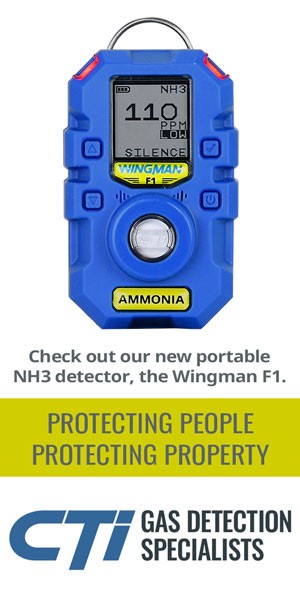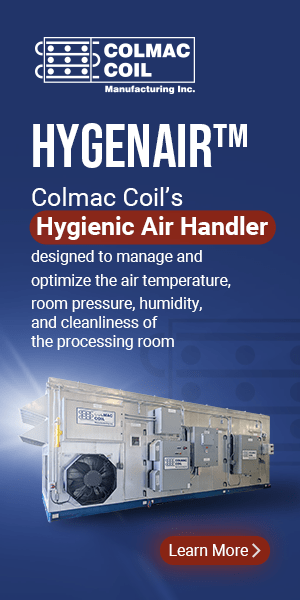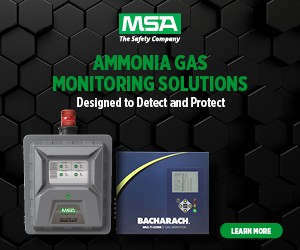Emergency Series Part 2: Emergency Shutdown and Response
Jen Allen, Allen Safety LLC
This article has been updated from a previous version to distinguish the differences between a nuisance leak response and a HAZMAT response.
Emergency response or responding to emergencies means a response effort by employees from outside the immediate release area or by other designated responders (i.e., mutual aid groups, local fire departments, etc.) to an occurrence which results, or is likely to result, in an uncontrolled release of a hazardous substance. Responses to incidental releases of hazardous substances where the substance can be absorbed, neutralized, or otherwise controlled at the time of release by employees in the immediate release area, or by maintenance personnel are not considered to be emergency responses within the scope of this standard. Responses to releases of hazardous substances where there is no potential safety or health hazard (i.e., fire, explosion, or chemical exposure) are not considered to be emergency responses.
We saw in part one of our Emergency Series covering Pre-Emergency Planning (November 2020 Condenser, page 25) that, as an industry, we are having to reframe how we look at ammonia leaks. From employee turnover creating less experience in our engine rooms to aging equipment, we are finding that HAZMAT scenarios have become part of the business. We have also found that, based on the safeguards an organization puts in place to address these leaks, ammonia leak management can be simple. In this second article, we will take you step-by-step through the emergency response process. From initial leak identification through releasing the area back to normal operations, we will provide you with tools and strategies to ensure any leak at your location is well-coordinated and well managed.
WHAT CAUSES A LEAK, AND WHEN IS IT HAZMAT?
When we think about what can cause an ammonia leak, several scenarios come to mind: construction, line break, repair and maintenance, weather, mechanical integrity, wear and tear, wrong parts, sanitation chemical corrosion, and power industrial trucks to name a few. But how do we recognize if the leak is a “nuisance leak” or if a HAZMAT scenario is occurring? To make this determination, we may need to reframe how we view HAZMAT responses. Often the term “HAZMAT” brings to mind an outside agency response and level A suits, but it may be beneficial to view HAZMAT responses with a more modern lens where we define a HAZMAT response as a response to an unexpected ammonia leak at or above a facility’s pre-determined evacuation levels, in which responding operators or technicians match the level of PPE worn to the leak’s severity.To aid in this, the following questions can be helpful:
- Is the presence of released ammonia unexpected, and not the result of planned repairs/maintenance?
- Is the concentration of ammonia in the technician’s breathing zone where they would stand to make the adjustments/repair greater than the facility’s pre-determined evacuation levels for ammonia?
- Is the concentration of ammonia rapidly increasing?
- Per the facility’s emergency programs, would the operator or technician be required to either don additional PPE to fix the leak or evacuate the area?
- If operators or technicians answer yes to the questions above, then the scenario would likely require a HAZMAT response.
OSHA’s HAZMAT and Emergency Response standard, 1910.120, outlines emergency responses as those where a group of responders, either internal or third party, comes from “outside the immediate release area” to address a leak that has a good chance of becoming uncontrolled or significant in size.
Within this standard OSHA allows employees to address the release without classifying it as a HAZMAT response if:
- They are within the immediate leak area
- They feel the release can be easily controlled and/or managed
- There are no safety hazards present at the time of occurrence
The complete standard can be found at https://www.osha.gov/ laws-regs/regulations/standardnumber/1910/1910.120
In any case, a facility should establish protocols for a leak investigation, what situations constitute safety hazards, and when HAZMAT responses should be initiated. Operators and technicians should be familiar with these protocols.
THE RELEASE
Once it is established that a HAZMAT response will be required, a facility has two choices. If there is a trained internal HAZMAT team at the facility, a trained Incident Commander- someone with a current HAZMAT Technician Certification as well as a current Incident Command Certification- will need to take over the scene. Alternatively, if the facility does not have a trained HAZMAT team on-site, they will need to call a third-party HAZMAT team to respond. This can include a fire department or a hired response company. The facility will then stand down, not making entry into the hot zone regardless of victim or leak status, and upon the arrival of the third-party responders, the facility’s role will be to advise and support from the cold zone.
If the facility has an internal HAZMAT team, the Incident Commander will need to determine what PPE Level and response style is required. To accomplish this, additional leak investigation may be needed using the investigation protocols created during emergency pre-planning. These protocols outline the number of participants, what meter will be used, and when to don respiratory equipment.
Based on the information the investigation yields, the Incident Commander can determine the following:
- Is the quantity of ammonia lost small or large?
- Do any local, state, and federal agencies require leak notification?
- Are shelter in place or evacuation orders necessary for the facility itself, surrounding businesses, or residential neighbors?
- What Level of PPE is required?
- Does the team have the training and medical qualification to respond at that Level, and in that PPE?
- Is the required PPE on hand, in good working order, and in sufficient amounts for each participant?
- Are there enough trained personnel present on-site to safely respond?
- Is an offensive response (to include victim rescue and leak shutdown), or defensive response (emergency stop button is pushed) required?
- Is your team trained to perform offensive or defensive leak responses?
Upon answering these questions, the Incident Commander will begin putting a response plan into place. If the Incident Commander determines a facility evacuation is required, trained location evacuation coordinators will begin evacuating personnel to pre-identified locations up-wind of the leak while the Incident Commander is conferring with location refrigeration technicians to develop a plan to address the leak or any life safety/victim concerns. It would be typical that law enforcement and fire support aid in the evacuation notifications for any neighboring businesses or residential areas.
PPE SELECTION
With site evacuation coordinators and local agencies managing shelter in place or evacuation needs, the Incident Commander can turn their focus on outlining specific plans for addressing victim management, where the leak is occurring, the size of the leak, how long the leak has been active, options for shutting down the leak, and PPM of ammonia in the areas where victims and/or valves for shutdown are located. For PPE determination there are two options. If the leak is known to be under IDLH in areas the entry team will need to access, a response in APRs and ammonia gloves paired with a standard work uniform, Level B suit, or rain suit- often called a “Stage 2 HAZMAT Response” or “Limited HAZMAT Response”- is sufficient. If significant time has gone by since the initial investigation, Levels are at or above IDLH, or if leak concentrations are unknown, a “Stage 3” or “Level A HAZMAT Response” is required.
While in the past facilities trained using Level B for ammonia leak responses that were just over IDLH, viewing them as a “less risky” PPE option, we have found in live applications this concept is not practical. This is due to many Level B manufacturers not providing a max PPM concentration for Level B use. That coupled with the possibility of finding the leak is both liquid and vapor, a mixture of ammonia and other chemicals, or exceeds their location’s Level B threshold all make a response in Level B undesirable. This is because these scenarios all require the entry team to return to the cold zone where entry and backup teams must change to Level A, with entry teams re-entering the hot zone 20+ minutes later to manage a leak that has increased in size and duration, adding unnecessary risk for entrants.
BRIEFING AND GOALS
Once the team has determined PPE Levels, the Incident Commander will begin verifying last dates of training, training Levels, and that physicals and fit testing are within the last 12 months. (Even during a pandemic, training and medical questionnaires/ evaluations should be within 12 months). Officer roles will be assigned according to the style of response chosen. If a Stage 2 or APR response is required, two entry, two backup, and an on-site Incident Commander will begin the briefing session.
For a Stage 3 or Level A response, the Incident Commander will instruct the 2-person entry team and a 2-person backup team to begin having their pre-entry vitals taken by the Medical Officer and begin dressing in Level A. A Decontamination (Decon) Officer would begin setting up a three-stage wet decontamination zone prior to entry, allowing the team to be immediately decontaminated upon their arrival to decon regardless of what is identified in the hot zone. This could include victim management, heat stress recovery, a mixture of chemicals or oil, or a liquid leak. This versatility makes wet decon preferential to a dry decon, which can only be used for ammonia vapor. Once decon is staged, the team member would have their pre-entry vitals taken by the Medical Officer, and dress in Level B. Based on the number of additional team members available, the roles of Entry Team Officer, Safety Officer, Logger, and Security Officer roles may also be assigned.
Once the team is ready to make entry, the Incident Commander will review the goals of the entry with the goals of Life Safety (remove and treat victims), Scene Stabilization (leak shutdown or hitting the emergency stop), and Property/Product Conservation in mind, in that order. For entry teams performing refrigeration tasks, it is important that a trained and qualified operator perform the refrigeration tasks. The roles of the second entrant, backup team, or for an entry team that is only removing victims can be filled by anyone that is current on their technician training and medical qualifications. This is something that can be extremely relevant for responses where there are limited operators that can pass vitals, where multiple entry teams are required, or for off-shift, weekend, or holiday responses when team members called back are slow to arrive at the location.
Communication methods and expectations should be covered, including who on the entry team will communicate with the Incident Commander, as well as specific parameters for exiting the hot zone. For a Stage 2 entry, expectations to exit the hot zone would include meter readings nearing 250PPM (immediately dangerous to life and health, IDLH, for ammonia is 300PPM). For a Stage 3 Level A entry, a typical expectation might be when the SCBA “bell” beings ringing, or when there are approximately 10-15 minutes of air remaining in the tank. For either stage response, entrants should exit the hot zone if conditions inside the hot zone are different than expected or change, rendering the initial plan unsafe to complete, unachievable, or ineffective.
The emergency portion of the location’s SOP should be reviewed and then followed by the entry team, providing the team with specific detailed information on how to shut down and isolate a leak for each specific piece of equipment at that site, based on that unique system. Support documents such as accurate P&IDs and block flow diagrams can be extremely helpful for refrigeration operators and PSM coordinators when locating what valves should be closed, the order in which they should be closed, if any pump-out lines exist, and any drain time required to avoid trapping ammonia. If the team determines that the predetermined site-specific emergency shutdown procedures written into the SOPs- that receive an annual review by operators- cannot be followed for any reason during the response, it is highly recommended that the Incident Commander or logger document during the briefing the reason these procedures cannot be followed. The team will also need to document what procedures were followed instead, and why a different method was utilized.
THE RESPONSE
Once the entry team departs the cold zone, the Incident Commander will have frequent check-ins with the entry team, with the entry team providing updates on their location, meter readings, what step of the plan they are completing, and when they are returning to Command or Decontamination. This accomplishes two goals. One, it allows the IC to track the specific location of the entry team in case backup must be activated. Two, it allows the IC to verify conditions inside the hot zone and determine the goals and plans for the next entry team. If any of the predetermined scenarios for immediate departure of the hot zone arise (meter readings, conditions, elapsed time), the entry team will return to Command. If for any reason the IC loses communication with the entry team, or if the entry team does not return within the expected timeframe, backup will be sent to retrieve the entrants.
VICTIMS AND DECONTAMINATION:
If victims are removed from the hot zone, there are two options based on a team’s training level. If the team is a Stage 3 Level A trained team, the team can begin treatment of victims immediately by providing a wet decontamination as victims arrive at the decontamination zone. Decon and Medical Officers will coordinate with ambulance crews for victim medical management once initially decontaminated. If the facility has no HAZMAT team, or, a Stage 2 or Limited Response HAZMAT team, the facility would work with the area fire department or ambulance crew to decontaminate and treat any victims removed from the hot zone. Once victims are being treated- or if there were no victims removed- the entry team will be deconned, swabbed to ensure there are no residual contaminants, and return to the cold zone where PPE is removed and post-entry vitals are taken.
RELEASING THE AREA:
The entry, decontamination, re-entry cycle may continue several times based on if there were victims, leak size, duration, location, valve accessibility, number of leaks, mechanical integrity in the area where the leak was shut down/isolated, and the accuracy and effectiveness of the location’s SOPs. Once the final entry is made and the Incident Commander has verified the shutdown was successful and the area is ventilating, the team can begin focusing on returning to normal operations. This includes:
- Collection of any logger notes
- Obtaining written statements from all participants
- Lock/tag any required valves and secure rooms
- Contact a hazardous waste hauler to neutralize and remove any contaminated items
- Schedule any required repairs
- Completion of an event critique
- The final step includes the completion of an incident investigation addressing how and why the leak occurred, with a written action plan including responsible parties and estimated completion dates to prevent re-occurrence.
LASTING EFFECTS:
HAZMAT response timelines can range from 15 minutes to 8+ hours, but with proper pre-emergency planning and emergency response safeguards, a facility can take back control of what historically was viewed as an uncontrolled event. The impact this planning has on risk reduction for responders, response time to victims, and length and severity of the leak, all also directly affect a facility’s bottom line through production downtime and product loss. This makes thoughtful and detailed emergency management programs not only the right and responsible thing to do for employees and neighbors but also a benefit financially to every location. Jen Allen is the Vice President for Allen Safety LLC, which specializes in confined space rescue training, HAZMAT training, and customized Safety & PSM audits.











